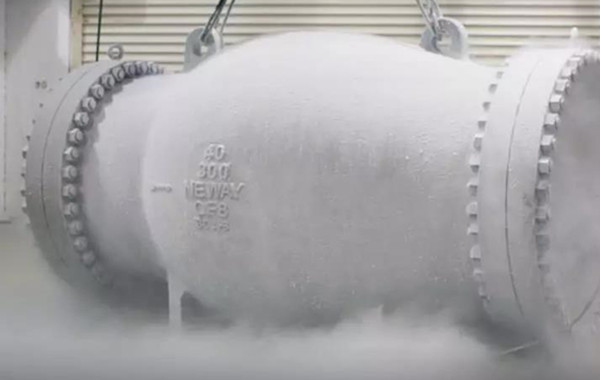The sealing analysis of LNG cryogenic valve
Cryogenic valves are mainly concentrated in liquefied parts and LNG storage parts for natural gas liquefaction plants. Form a rough statistic, there are about 2,000 cryogenic valves available in LNG receiving stations (large stations with a receiving capacity of more than 2 million tons/year), accounting for more than 90% of all the valves. Among them, there are about 700 small-size valves, while the rest are high-pressure and large-diameter valves.

LNG has a small molecular weight, low viscosity, strong permeability, easy to leak, inflammable and explosive which requires high sealing of the valve, as well as static electricity, fire prevention and explosion protection. The seals play a central role in keeping valves up and running, today we analyze the sealing requirements of cryogenic valves in LNG system.
Stem Seal
The stem seal for cryogenic valves is usually packing. Common fillers are PTFE, impregnated PTFE asbestos rope and flexible graphite. To ensure its cryogenic seal performance, a combination of soft seal and hard seal double packing is often used, a double packing with intermediate isolation ring (low temperature and high-temperature resistant mixture) and the additional elastic load device. Elastic load device such as disc spring gasket, so that the packing in the low-temperature pre-tightening force can be continuously compensated, to ensure the packing sealing performance for a long time.
Valve leakage is divided into internal leakage and external leakage. The external leakage is more dangerous due to the flammable and explosive nature of LNG. Stem seal leakage is a major potential source of external leakage. Cryogenic valve stem seal can be metal bellows seal structure, that can work at high temperatures and low-temperature conditions. Compared with mechanical seals, bellows seal has the advantages of zero leakage, no contact, no friction, no wear and so on, which can effectively reduce the medium leakage at the valve stem and improve the reliability and safety of cryogenic valves.
Flange Seal
The ideal cryogenic seal gasket material is soft at room temperature, resilient at low temperature, with small linear expansion coefficient and certain mechanical strength. The middle flange gasket of the cryogenic valve is made of stainless steel ring and flexible graphite. At low temperatures, the gasket seal is smaller than the reduction which may cause the leakage of the medium.
Fasteners
Austenitic stainless steel fasteners should be selected to ensure the low-temperature impact toughness under LNG working conditions. It is necessary to go through strain hardening and molybdenum disulfide to the part of the thread because of the low yield strength of austenitic stainless steel.
Fully threaded studs are often used for valve fasteners. In order to improve the mechanical properties, raw material solution heat treatment (Class1), final solution heat treatment annealing (Class1A), final solution heat treatment annealing and tensile hardening (Class2) can be carried out for austenitic stainless-steel fasteners. Austenitic stainless steel fasteners of 304, 321, 347 and 316 below 1/2in (12.5mm) shall be used at temperatures above -200℃. If solution heat treatment or strain hardening has been done, the low-temperature impact test is not required, otherwise it should be conducted.
Fasteners are prone to fatigue failure under alternating load. Torque wrenches should be used in actual operation to ensure uniform force on each bolt and avoid leakage caused by excessive force on a single bolt.



Leave a Reply
Want to join the discussion?Feel free to contribute!